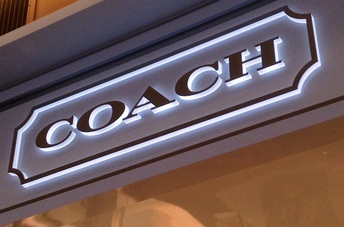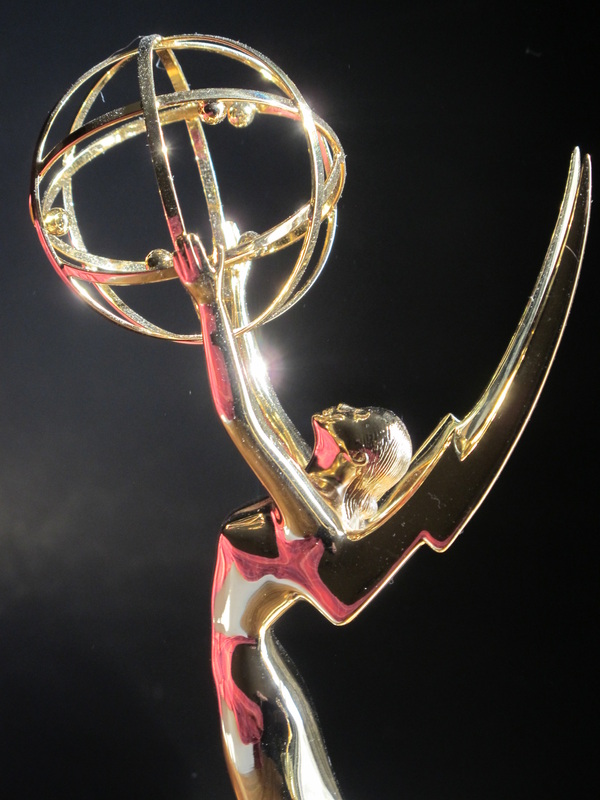 Image © by Brian E. Faulkner
Image © by Brian E. Faulkner Krystina Gustafson speculates in her CNBC.com article that, while Weitzman will add to overall Coach sales, it may not do much for the brand’s image, which needs some propping up. She also quotes Robert Konik, an analyst with the global investment banking firm Jeffries, who suggests (in a note to investors) that Coach has, indeed, lost some of its pricing power.
The brand may have at long last fallen out of favor with high end shoppers, Gustafson adds, because of “stale product, over-distribution and damaged brand equity from its high presence at outlet malls.”
Back in the late ‘80s, I helped their president, Lew Frankfort, with a Coach positioning speech he presented to an audience of marketing and sales reps. Frankfort led development of the Coach business from the early ‘80s until his retirement late last year as executive chairman, during which he was instrumental in expanding the fashion leather handbag’s company’s revenue and global footprint by many orders of magnitude.
My brief connection with him occurred during the company’s Sara Lee days, when the Chicago-based food and apparel giant was making acquisitions and launching initiatives in direct retail. The corporation’s desire back then, via their Sara Lee Direct division, was to maximize the potential of its well-known brands, and what they discovered through research (if I recall correctly, conducted by McKinsey) was that if Coach products were sold in high end department store boutiques as well as Coach-owned retail stores, aggregate sales would increase. That appears logical enough at first glance, but the fear was that department store sales would eat into Coach store sales – and begin eroding their price premium. At that time, their flagship Manhattan store was said to do more sales per square foot than any other retailer in America.
But department store sales of Coach bags did not cannibalize sales in the company’s own stores. And soon, the logic went, why not try outlet malls, since Sara Lee Direct already was knee deep in building off-price stores for its Hanes, L’eggs and Bali brands. So Coach stores began turning up at the better outlet malls, a presence that remains today.
But there’s the rub. Without denying the considerable growth of Coach, Inc. over the years, a portion of which clearly must have come from its outlet mall business, one does wonder whether their exalted brand name has been diminished by its continued presence in discount retail settings, where the merchandise isn’t always the same as that you’d find in New York, Beverly Hills or Tokyo. For instance, in the third quarter of 2010, “87-percent of the merchandise at Coach outlet stores was manufactured for the outlet,” according to a 2011 article at palmbeachpost.com. “The rest was made up of items that came from the retail stores - perhaps excess inventory, or returns, or items that were no longer in season.”
“The outlet bag is just not the same quality, won't have the same details, as the one at the retail store for $1,200," noted Howard Davidowitz, chairman of national retail consulting and investment banking firm Davidowitz & Associates Inc., in the article -- although you still can cop a deal at your nearest Coach outlet store from time to time. “A pink Mia handbag from Coach’s Madison collection was found on discount for $175 recently at the Vero Fashion Outlet," the same article noted,"plus an additional 20 percent off that was being offered on everything in the store for a final price of $140. That same handbag was available by special order at the Coach retail store in The Gardens Mall — still at the full original price of $358.”
Even so, I must admit that seeing a Coach store in an outlet mall these days rather disappoints me.
The CNBC article notes that a pair of Stuart Weitzman pumps sell at a considerable premium over a Coach branded pair (assuming equal product style and quality, one would think). So apparently Coach does, indeed, have some pricing headroom to make up because of the downward pull on their premium image, an opportunity that they’ve created for themselves by associating the brand with outlet settings for so many years.
Meanwhile, I will continue to enjoy use of the Coach Bleeker Flap Briefcase I acquired back in the ‘80s. It’s been through the wars -- including one minor flood that devastated its contents, and it still looks and performs great. Let’s hope the company’s image does that well over the long run as Coach grows into those “lifestyle” products.
TakeAway: If you’re marketing a premium product, stick with a price that commands -- and builds on -- your brand’s premium positioning.
For additional discussion about sticking to premium product pricing, using Godiva chocolates as an example: http://www.brianefaulkner.com/blog/godivas-alluring-words-enduring-promise
Content © by Brian E. Faulkner
Sources: http://www.cnbc.com/id/102314069
http://www.palmbeachpost.com/news/business/outlet-stores-are-you-getting-a-good-deal-or-just-/nLpgZ/

 RSS Feed
RSS Feed